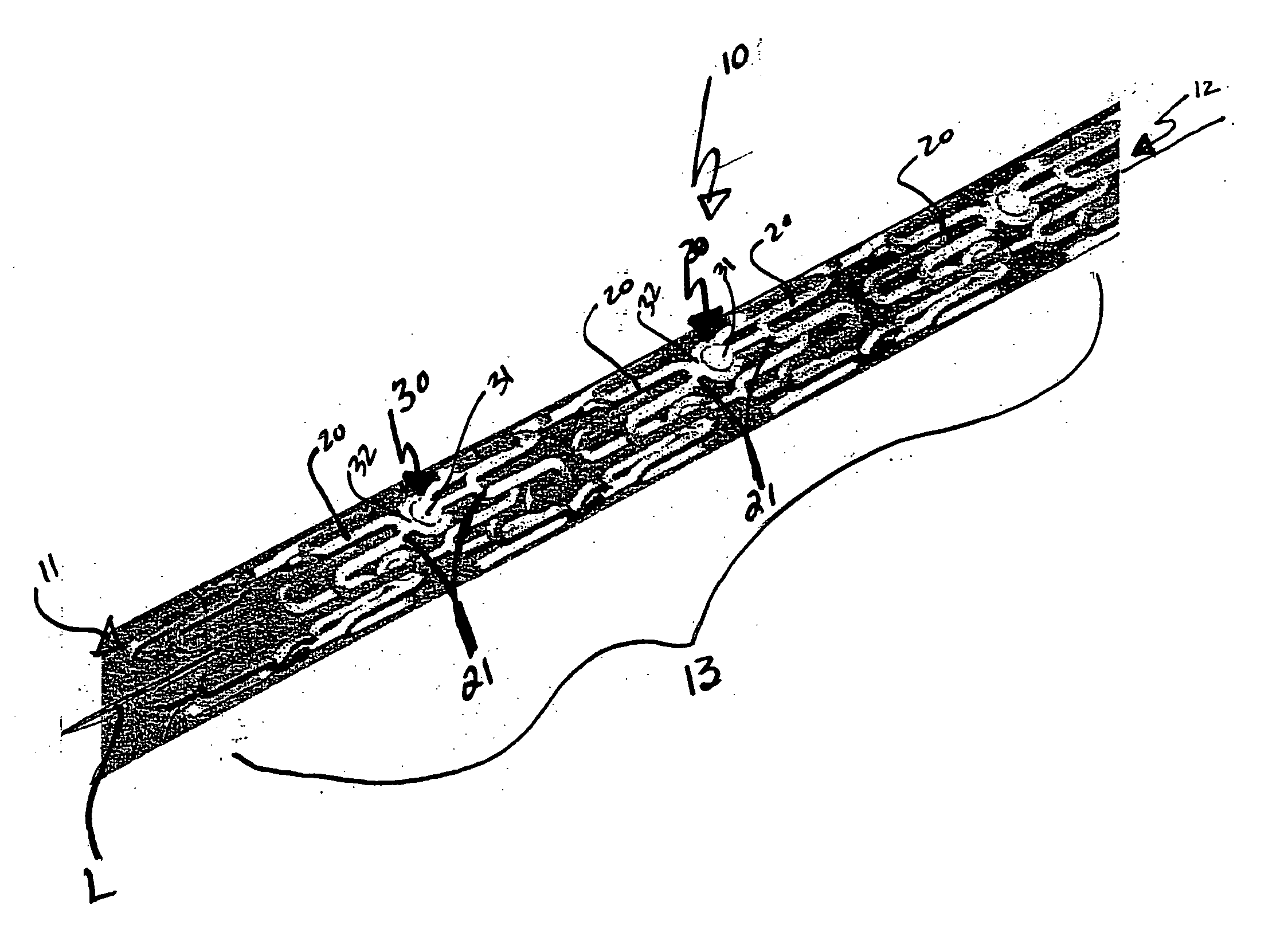Stent with mechanically interlocking struts and methods for making the same
a technology of mechanical interlocking and stents, which is applied in the field of stents, can solve the problems that the female component of the mechanical interlock cannot be pushed outwardly, and achieve the effects of facilitating delivery, and increasing the flexibility of the sten
- Summary
- Abstract
- Description
- Claims
- Application Information
AI Technical Summary
Benefits of technology
Problems solved by technology
Method used
Image
Examples
Embodiment Construction
[0046]FIG. 5 illustrates a cylindrical stent 10 having a first end 11, a second end 12 opposite the first end 11, and an intermediate section 13 extending therebetween the first and second ends 11, 12. A longitudinal axis L extends throughout the stent 10 between the first and second ends 11, 12 as well. Hereafter, any reference to “inward” or “inwardly” movement is understood as movement towards the longitudinal axis L, unless otherwise indicated. The intermediate section 13 of the stent 10 further comprises a series of adjacent strut sections 20 comprised of undulating waves that extend longitudinally between the first and second ends 11, 12. A closed end 21 of the undulating wave of one strut section 20 is generally aligned opposite a closed end 21 of the undulating wave of an adjacent strut section 20 so as to form designated pairs of longitudinally adjacent strut sections 20. Each designated pair of longitudinally adjacent strut sections 20 are connected via a mechanical interl...
PUM
| Property | Measurement | Unit |
|---|---|---|
| Angle | aaaaa | aaaaa |
| Thickness | aaaaa | aaaaa |
| Flexibility | aaaaa | aaaaa |
Abstract
Description
Claims
Application Information
 Login to View More
Login to View More - R&D
- Intellectual Property
- Life Sciences
- Materials
- Tech Scout
- Unparalleled Data Quality
- Higher Quality Content
- 60% Fewer Hallucinations
Browse by: Latest US Patents, China's latest patents, Technical Efficacy Thesaurus, Application Domain, Technology Topic, Popular Technical Reports.
© 2025 PatSnap. All rights reserved.Legal|Privacy policy|Modern Slavery Act Transparency Statement|Sitemap|About US| Contact US: help@patsnap.com



